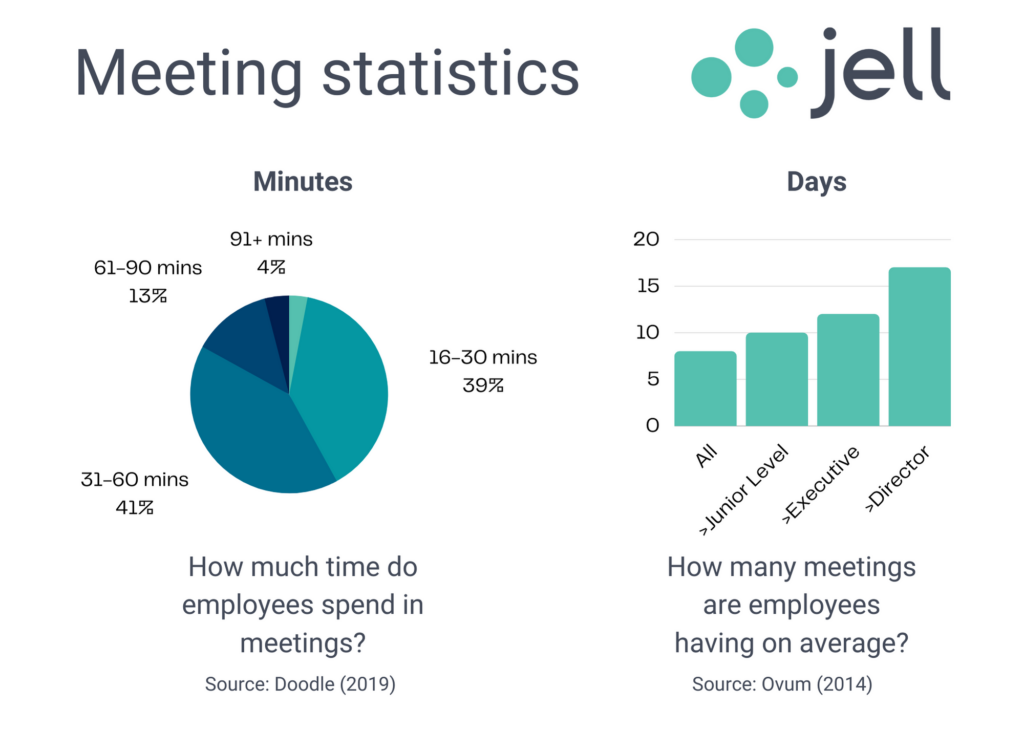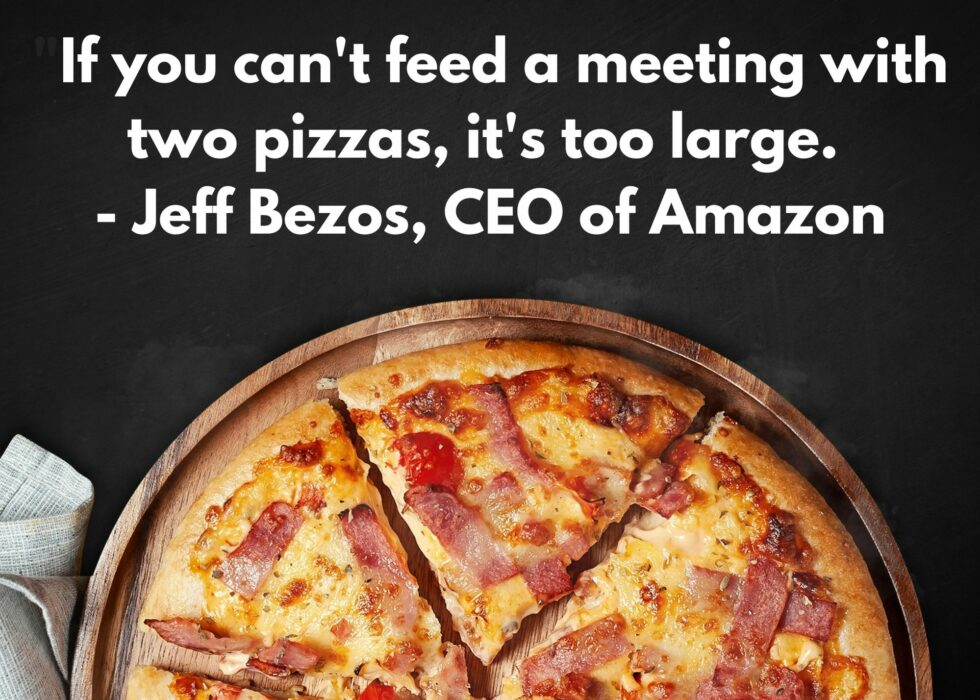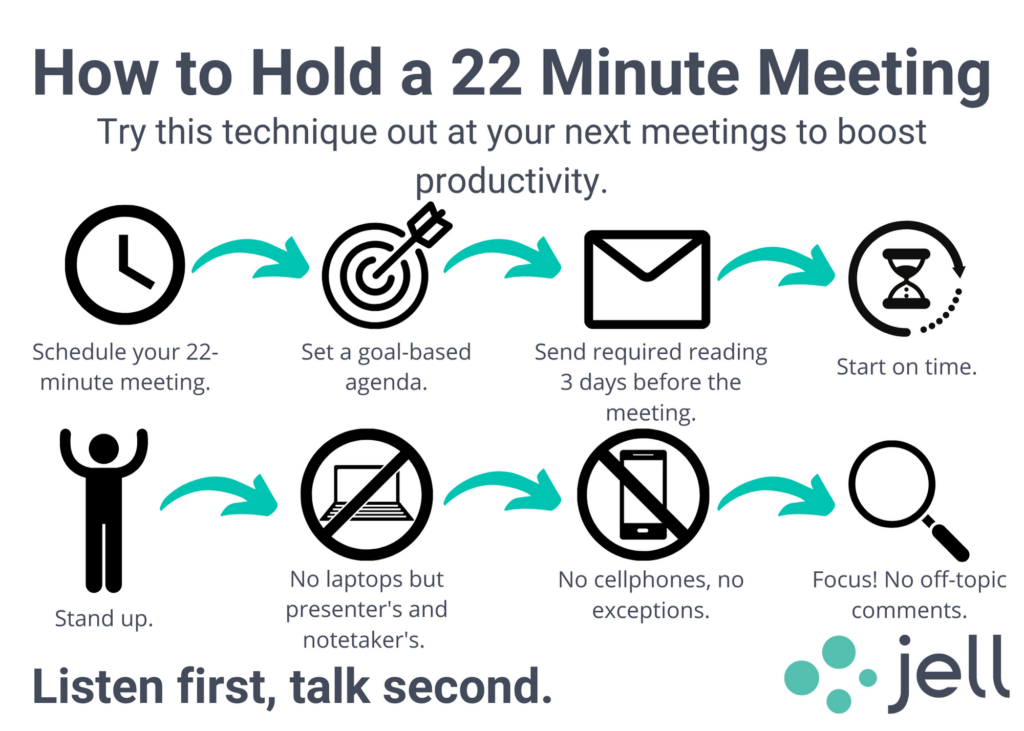 Do you want to make your team more efficient and run productive meetings? Are you looking for easy ways to generate more revenue for your business?Have you evaluated your team meeting cost yet?Making the best of the time people spend in meetings is one of the most important things you can do to build productive teams and increase revenue potential.Studies show that U.S. businesses lose $37 billion a year to unnecessary meetings. One analysis showed how a weekly meeting drained a company of 300,000 work hours a year. Another outlined how easy it would be for the average big business to waste $300 million on useless meetings.The financial implications of unproductive meetings are massive. Unproductive meetings cost money.But there’s a flip side:
Do you want to make your team more efficient and run productive meetings? Are you looking for easy ways to generate more revenue for your business?Have you evaluated your team meeting cost yet?Making the best of the time people spend in meetings is one of the most important things you can do to build productive teams and increase revenue potential.Studies show that U.S. businesses lose $37 billion a year to unnecessary meetings. One analysis showed how a weekly meeting drained a company of 300,000 work hours a year. Another outlined how easy it would be for the average big business to waste $300 million on useless meetings.The financial implications of unproductive meetings are massive. Unproductive meetings cost money.But there’s a flip side:There’s Tremendous Value in Productive Meetings
Bad meetings cost money. Good meetings boost revenue.For example, let’s say you have an outstanding sales associate named Sid. He’s intelligent, talented, and full of big ideas.Now let’s say it’s 9:30 a.m. on a Friday. Sid’s been working all week on customer satisfaction research to support a new retention and renewals initiative. Yesterday afternoon, he spent an hour brainstorming creative ideas and 15 minutes hashing out a few details on Slack.Now it’s time for the big meeting when Sid and five of his colleagues decide which direction to take. He walks into the conference room with a plan in hand. Thanks to a daily meeting of short online standups, he already knows what everyone’s working on and can launch right into a discussion about the project at hand.Within 30 minutes, responsibilities have been divided up, and team members are back at their PCs working on related tasks. By Monday morning, the new initiative is in full swing, and everyone’s devoting their most productive hours to prepping it for launch.If the average team member earns $100 an hour in wages and benefits, this meeting costs the company $250.Hold More Efficient Meetings with Jell
Automated Daily Standups Reminders, Check-ins, & OKRs.
14-day free trial. No credit card required.
Related Articles
The Secret to Running Successful Meetings
You Know Your Meetings Suck If…
The Standup Meeting: Your Ultimate Guide to Knocking it Out of the Park
Unproductive Meetings Waste Absurd Amounts of Money
Now compare Sid’s story to that of Mary, who works down the hall in the Marketing department.Mary also has an idea for a new campaign to reengage lost customers. But unfortunately, she hasn’t done any research yet, preferring instead to talk through half-baked ideas with other members of the 10-person team.She set aside an hour for a group brainstorm, but the first 25 minutes are spent discussing what everyone’s currently working on. Small talk ensues, and by the time they get to the topic at hand, 73% of attendees are working on unrelated tasks. The meeting is followed by a barrage of emails among staff as they try to figure out what’s next. This ultimately turns a one-hour meeting into four hours of work.Total meeting cost: $5,025—a 1,910% increase over Sid’s 30-minute meeting with zero related email chains.Productive Meetings Mean More Revenue Opportunity
Fast-forward a month. Sid’s sales team has already increased renewals by 15% a week after launching the campaign. Meanwhile, Mary’s marketing team is still halfway through the planning stage.If the example above hits a little too close to home, don’t panic. There are plenty of ways to turn an unproductive meeting cost into revenue-boosting get togethers. If you’re not sure where to begin, you can start by using our chart to decide when to meet and when to rely on tools like Slack and Jell instead, and let’s learn how to save money with productive meetings. So, do Your Meetings Take Too Long?Kevin Daum, an Inc. 500 entrepreneur, created this three-part strategy:
So, do Your Meetings Take Too Long?Kevin Daum, an Inc. 500 entrepreneur, created this three-part strategy: - Set a detailed and actionable place.
- Invite only the essential employees needed.
- Create a smooth closing. “Meetings can be productive without taking a ton of time and sapping your life energy,” he says.
How to Hold More Productive Meetings
1. Before holding a meeting, answer the “why?”
“You have a meeting to make a decision, not to decide on the question.”–Bill GatesBefore you have a meeting, ask yourself if this meeting can be addressed in a simple email. And that’s not a joke. We learned that meeting cost is an important business metric to pay attention to, so what if you could save money by taking the time to type up what you want to say and send it in an email? If you need collaboration and brainstorming from the team, then ask yourself, “why do we need this meeting?” If you don’t have an explicit goal or action item, you’re not ready to hold that meeting. Furthermore, if it’s something you can do yourself, chances are it’s not meeting material. Save your employees’ precious time.As Bill Gates said, your meeting shouldn’t be a brainstorming session trying to find the “whats” and “whys.” Instead, this should be answered beforehand. The most efficient meetings have clear objectives. Write down a statement of what you want to achieve in this meeting, and this action alone can shred an average of 17 minutes off of your meeting time. Share a plan in advance (at least 1-2 days beforehand) so that your employees can organize their thoughts and materials to share with the team.2. Consider the Two-Pizza Rule
 Former Amazon CEO Jeff Bezos shared his secret to productive meetings, and that’s the two-pizza rule: Never have a meeting where two pizzas couldn’t feed the entire group.Now, depending on how many slices you allow per person (typically 2 slices, but who only stops at 2 slices), let’s say 3-4 slices per person for a 2 8-slice pizzas, that’s only 4 attendees. For a 12-slice pizza, that’s 6 attendees. This isn’t a tried and true rule, but only a guide for thinking strategically about who you invite to your meetings. There’s a difference between which attendees are optional and which are critical. Studies show that the most productive meetings have 5-8 people.If your non-essential attendees are worried they’ll miss out on important information, have your meeting’s note-taker send them notes after the meeting adjourns.But the sentiment is there: only invite essential team members to stay on track. [/et_pb_text][et_pb_text _builder_version=”4.16″ background_size=”initial” background_position=”top_left” background_repeat=”repeat” locked=”off” global_colors_info=”{}”]
Former Amazon CEO Jeff Bezos shared his secret to productive meetings, and that’s the two-pizza rule: Never have a meeting where two pizzas couldn’t feed the entire group.Now, depending on how many slices you allow per person (typically 2 slices, but who only stops at 2 slices), let’s say 3-4 slices per person for a 2 8-slice pizzas, that’s only 4 attendees. For a 12-slice pizza, that’s 6 attendees. This isn’t a tried and true rule, but only a guide for thinking strategically about who you invite to your meetings. There’s a difference between which attendees are optional and which are critical. Studies show that the most productive meetings have 5-8 people.If your non-essential attendees are worried they’ll miss out on important information, have your meeting’s note-taker send them notes after the meeting adjourns.But the sentiment is there: only invite essential team members to stay on track. [/et_pb_text][et_pb_text _builder_version=”4.16″ background_size=”initial” background_position=”top_left” background_repeat=”repeat” locked=”off” global_colors_info=”{}”]3. It’s all in the timing
“You should never go to a meeting or make a telephone call without a clear idea of what you are trying to achieve.” –Steve JobsWhen you know what you’re trying to achieve, you can also put a time limit on it. Everyone in your company has a job to do, no matter what that job is. They either have more work to do or another meeting to attend. No matter what it is, their time is valuable. Likewise, your time is valuable, so treat it as such. Have a set start and finish time, and don’t go over. Time is money, so every precious second counts.Also, consider making your meetings shorter. Nicole Steinbok presented an idea at Seattle Ignite 9: the 22-minute meeting. Her premise is, who decided meetings need to be 30 or 60 minutes long? What data is this based on? None whatsoever. If you’re working in an office environment, 30 and 60-minute meetings don’t allow any time to travel between meetings, and also assume that employees need an average of 60 minutes to work things out. Of course, not all meetings can be 22-minute meetings, but it makes you think about how long you’re scheduling your meetings. Do you plan in 30 or 60-minute increments? Maybe it’s time to revisit that model.A few other points: If you’re in an office setting, don’t allow phones or laptops out on the table. Instead, have someone take notes during the meeting, so your employees don’t have to. You can view Nicole’s Ignite talk here:
Her premise is, who decided meetings need to be 30 or 60 minutes long? What data is this based on? None whatsoever. If you’re working in an office environment, 30 and 60-minute meetings don’t allow any time to travel between meetings, and also assume that employees need an average of 60 minutes to work things out. Of course, not all meetings can be 22-minute meetings, but it makes you think about how long you’re scheduling your meetings. Do you plan in 30 or 60-minute increments? Maybe it’s time to revisit that model.A few other points: If you’re in an office setting, don’t allow phones or laptops out on the table. Instead, have someone take notes during the meeting, so your employees don’t have to. You can view Nicole’s Ignite talk here:4. No off-topic commenters
While you don’t want to police your meeting, you also don’t want your meetings to go on dozens of tangents where you end up not discussing the main point of the meeting. Some deviations are okay, but keep them to a minimum. But also give others a chance to hold the baton. As a manager, feel free to ask if anyone has anything to add before moving on to the next topic. If your team works in person, consider using an actual baton or “speaker object” (like a tissue box or pencil sharpener). Then, your team knows who has the floor.Going along with this point, it’s important to have a meeting facilitator, whether it’s the manager or a designated employee. This host keeps the meeting’s pace and is responsible for establishing the meeting’s goal, writing the agenda, recording the decisions, deciding on the action items, and assigning owners tasks with timelines. If possible, the host should sign someone in the group up to take notes. The note taker should jot down:- Meeting notes
- Decision log
- Action items
5. Keep a decision log
Decision logs outline important decisions made during meetings. Someone in the meeting needs to write these points down to avoid future confusion or potential disputes.The decision logger needs to write a few bullet points outlining the critical decisions. Along with this, write the context of how the decision can be, why it’s essential, and who made the decision. This decision log also helps the team revisit the logs and reevaluate them in the future.Jot down:- The decision’s date
- The decider’s name
- The reason why
6. Consider a parking lot or issue bin for unaddressed issues
When important topics arise but aren’t relevant to the meeting’s agenda, consider having a whiteboard or Google doc (your meeting’s “parking lot”) for employee thoughts and concerns. This helps to keep the momentum going and the meeting on track. Then, add these whiteboard items to the notes sent out after the meeting and consider addressing these comments in the next meeting.In conclusion, meetings cost a lot of money. Still, there’s a lot you can do to prevent wasted time, including setting a meeting agenda, perfectly timing your meetings, inviting only those who are essential, keeping off-topic comments to a minimum, and designating a notetaker to help organize the group’s ideas. In time, you’ll master the art of the productive meeting (and have Jell to thank!).Meeting Cost: Frequently Asked Questions (FAQs)
How can I calculate the time lost in meetings?
We created our free meeting cost calculator for this purpose. So if you’re curious about how many minutes your team wastes in a meeting, this calculator is for you.What is a one-on-one meeting?
One-on-one meetings are regular check-ins typically occurring between a manager and their employee. It’s a chance for the manager to connect with their employees to stay on top of what’s going on in the employee’s work and personal life and work out team issues and potential roadblocks.What are routine meetings?
Whether you hold weekly team meetings, daily stand-ups, or sprint reviews, all exhibit formatting patterns. A meeting consists of two parts:- Information Sharing: updates, announcements, shout-outs, sharing project progress
- Collaboration: decision making, resolving blockers, outlining goals
What is a daily standup?
A daily standup meeting is a short, time-limited team status check-in held every day and usually at a designated time. It is a part of the Agile framework. Another name for this is daily scrum.How many meetings are in the Agile framework?
Generally, there are 4 Agile meetings: Sprint planning, daily standup, Sprint review, Sprint retrospective, and sometimes the backlog refinement meeting (backlog grooming).What is Jell?
Jell helps users create transparency in the workplace: assisting teams in writing OKRs (Objectives, Key Results) or sharing frequent status updates. This allows managers to discover and correct issues before they become problems.How can Jell help me with my meeting cost?
Jell can help you with meeting prep and scheduling, team onboarding, and communicating with leadership. It integrates with both Slack and Microsoft Teams.Jell lets you set up automatic standup, check-in, or update meetings whenever you want. This is especially important if you’re a global company working with individuals of multiple time zones and varying availability.Save on Meeting Cost with Jell
